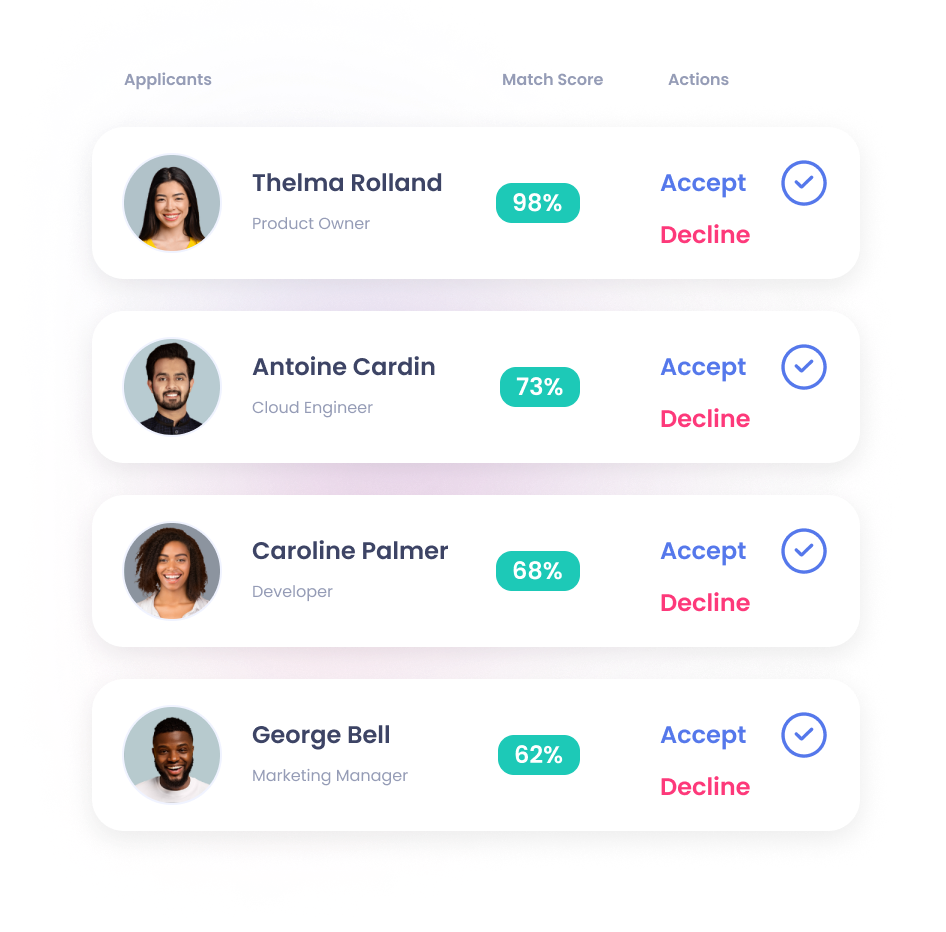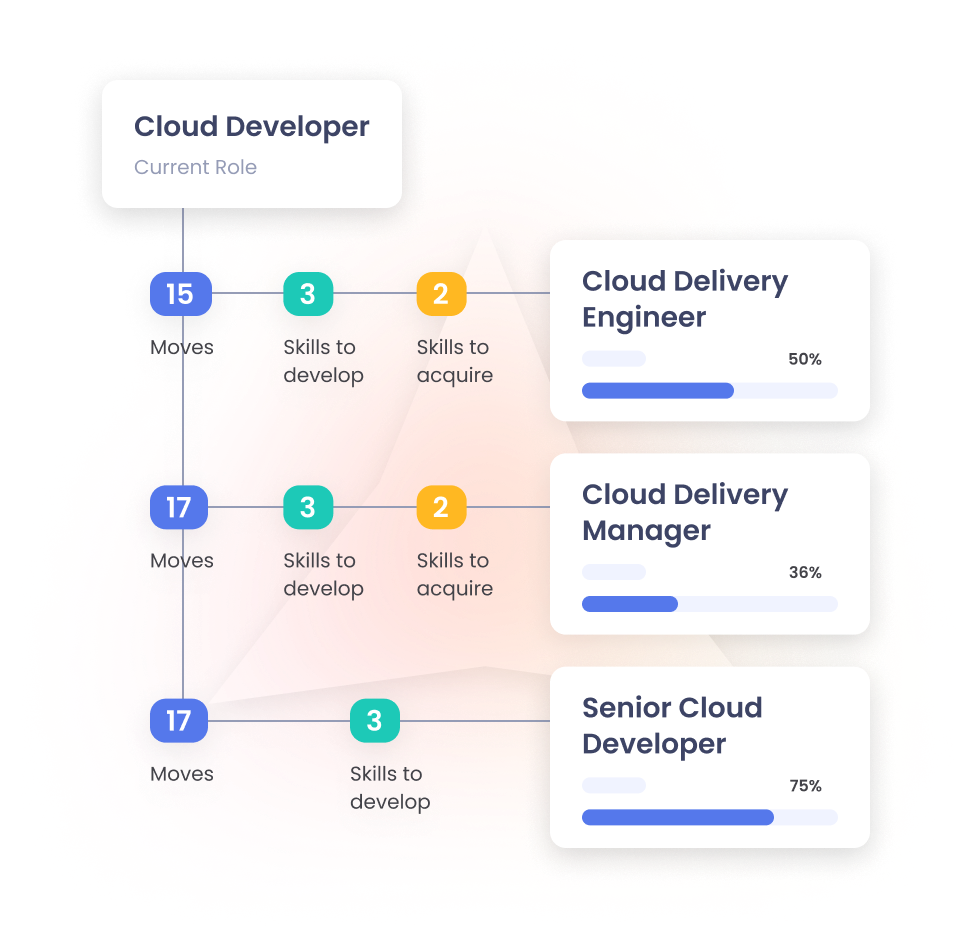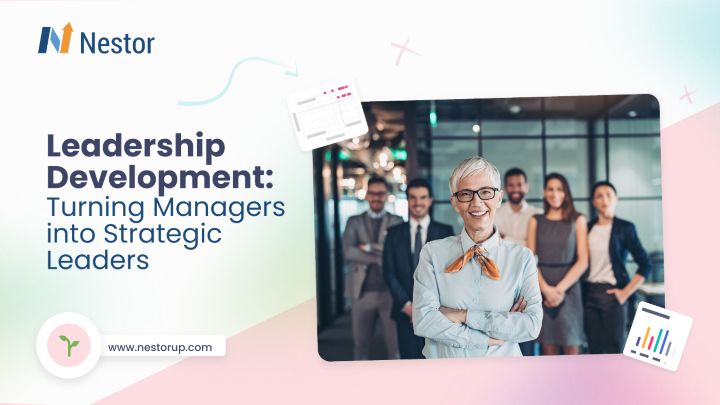
Contents
In a business world that faces talent and skill shortages, internal talent mobility has emerged as a powerful and strategic approach, which enables businesses to recognize the untapped potential within their own ranks.
And while some organizations are already enjoying the benefits of this transformative trend, others might still ponder where to start.
In this article, we take a closer look at what internal talent mobility is, what it implies, and what are some of the steps you can take to create a culture where internal moves are encouraged, supported, and celebrated. Let’s dive right in!
What is talent mobility?
Talent mobility is the process of moving employees from one position to another within the same organization. It aims to fully use and optimize the current skills of your workforce, while also driving professional growth.
We can look at talent mobility as a strategic element of the larger talent management process. It’s also a response to rapidly changing business needs and the evolving expectations of modern employees, who value learning and development more than stability.
Learn more about the benefits of internal talent mobility.
Talent mobility vs. internal talent mobility
Most HR publications and big names in the industry seem to agree that ‘internal mobility’ and ‘internal talent mobility’ are synonyms of ‘talent mobility’.
There is also the idea that talent mobility somehow includes both internal and external employee moves (departures to other companies). However, we believe this confusion stems from the similarity with the career mobility concept, which, indeed, includes all moves made by workers either internally or externally.
What are the types of internal talent mobility?
People’s moves to different roles within the company can take different forms:
- Vertical mobility: This represents the traditional climbing of the corporate ladder, promoting from one position to another, and eventually reaching a (top) managerial or C-level position. It benefits from upskilling initiatives and the development of leadership skills.
- Lateral mobility: All moves made to different roles without major changes in responsibility levels or performance expectations are part of lateral or horizontal mobility. This trend has been growing in popularity, as people are more interested in flexibility and dynamic career paths. Organizations can also leverage it to raise engagement levels and empower individuals to keep providing value and use the full spectrum of their skill sets.
- Cross-functional mobility: We can argue that cross-functional moves are a subcategory of lateral mobility. They are also about transferring to a different position; however, the department or area of expertise is significantly different from the initial one. For example, someone moving from marketing to finance or HR. In contrast, an example of a regular lateral move would look more like a search engine marketing specialist switching to a social media (marketing) specialist role or a graphic designer becoming a video editor.
There’s also geographical mobility, which tends to be less common but still occurs. It is when, due to various business needs, an employee moves to a different office or subsidiary without leaving the organization. The job title doesn’t usually change, unless there’s a promotion, and the move can be either to a different city or abroad.
How to embrace an internal talent mobility culture
There are a few strategic steps that any organization can take to adopt and improve the speed and impact of internal talent mobility. And it all starts with:
Get C-suite executives on board from the start
Getting top leadership and decision-makers to embrace talent mobility shouldn’t be too difficult, especially when its benefits — from recruitment cost savings and skill development to higher engagement and the retention of top talent — can’t be overlooked.
To support your point, use statistics from reputable sources proving the power of internal mobility initiatives, like this eye-opening insight from LinkedIn’s Workplace Learning Report:
At the two-year mark, an employee who has made an internal move has a 76% likelihood of staying compared to only 56% for someone who hasn’t made a move.
— LinkedIn's Workplace Learning Report
Focus on skills and proficiency levels
Skills play a central role in talent mobility within an organization. To facilitate a smooth transition between jobs, it’s important to have a clear overview of the current abilities and knowledge within the company.
Skills are also crucial in ensuring that employees’ moves align with the organization’s strategic goals and current needs. By understanding employees’ skill sets, organizations can make informed decisions about where and how to deploy talent. While employees can identify areas where they have relevant skills, employers can match those skills with available opportunities.
Mapping employee skills should be done in relation to job roles, which, should also be broken down into specific abilities and proficiency levels. As a result, it will become easier to understand what someone needs to perform a different role at a higher level and how they can prepare for such a move.
You can use a skills taxonomy to create a detailed outline of your job roles and requirements and further use skills assessments to understand your people’s strengths and areas of improvement.
Understanding the skills of the workforce is also essential for strategic long-term workforce planning. It helps organizations identify skills gaps, succession planning needs, and areas where external talent may be required.
Embrace fluidity regarding talent and talent sharing
Moving beyond organizational silos is an important step in creating a company culture where talent mobility is fully supported. It begins with encouraging managers to allow their top performers to move (even if only temporarily) to other teams and departments and provide value there.
It can be a difficult process or transition, particularly when the evaluation of a manager’s performance relies on fixed KPIs and not on their holistic contribution to the larger success of the organization. But it must happen to take your talent mobility game to the next level.
This type of fluidity in relation to talent is present in companies that embrace workforce agility. In most cases, they are referred to as skills-based organizations. Their practices rely on deploying people quickly inside the organization and being able to assemble and disassemble cross-departmental teams, to respond decisively to new opportunities and unforeseen challenges.
Create transparent career paths and succession plans
The first steps presented so far won’t make much of an impact if people aren’t aware of talent mobility opportunities across the entire organization. And this isn’t only the responsibility of HR and L&D specialists.
Managers and supervisors also need to actively promote and inform their team members of all the learning and development programs the company provides. It’s important to transparently present:
- what each move implies
- specific requirements for new roles
- how the transition process happens
Use technology to your advantage
Leveraging technology and online tools is one of the fastest and most effective ways of transforming internal talent mobility into a powerful solution to your business challenges.
An internal talent marketplace, for example, can bring in one place all the available opportunities — from employee rotations and temporary projects to coaching programs and open roles — and allow all employees, regardless of job titles and departments, to explore and easily access them. This type of marketplace also uses matching algorithms to ensure that every worker can identify the best-fit opportunities for them.

Skills management software can also come in handy, as it enables organizations to identify, evaluate, and manage the skills and expertise of their talent and make better data-driven decisions. This type of tool can also integrate with other HR systems, like performance management or learning platforms, making it ideal for internal mobility initiatives.
Final thoughts
As the modern workplace keeps shifting and evolving, internal talent mobility has emerged as a powerful and dynamic force, fueling both individual and organizational growth and stability.
By embracing this new paradigm, businesses will develop more robust and high-performing workforces and give people a strong incentive to extend their tenures and find long-term career success without leaving the organization.









